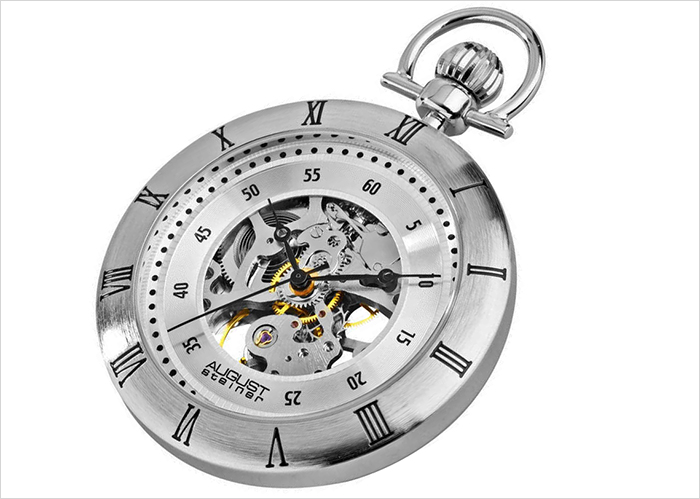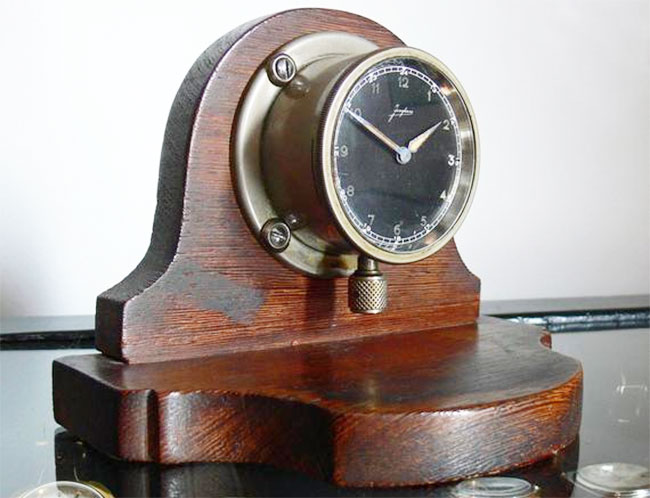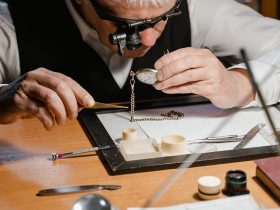What is a military pocket watch?
A military pocket watch is a type of watch made and produced for combat units.
Soldier pocket watches became popular during the onset of Boer Wars, circa 1880 – 1881. The Armed Forces needed a watch that is designed to be both ergonomic and readable and since wrist watches did not came after WWII, watch manufacturers started producing pocket watches especially designed to be used in wars.
What are the common design features of military pocket watches?
Original military pocket watches were mainly manufactured to the same specifications under these basic design features: easy to read dial with luminous numbers and hands; at least 15-jeweled movement; capable of keeping accurate time. Also, most combat pocket watches have hack features which means technically that the second hands (pointer to the second dials) ticked forward in distinct increments instead of continuously, for easy synchronization.
What are the types of military pocket watches?
During the wars, fighting countries ordered and distributed pocket watches for their combat units Army, Navy or Air Force. A military pocket watch is categorized based on the division using them.
Infantry or army pocket watch
The pocket watches used by the ground troops during the heat of World War 1 were carried off by soldiers inside their clothing. During World War 2, army pocket watches were made with lugs on their cases and were strapped on soldiers’ wrists because troops on the battlefield found it impractical to pull off the watches from their clothing while their hands are too full with weapons. Army or infantry pocket watches, by standard, are luminous.
Navy pocket watch
Pocket watches were very popular for navigational purposes as their size were perfect during tactical marine planning. Navy pocket watches can be laid down conveniently on top of a navigator’s map and can be easily read at a glance. A naval pocket watch for both bombers and tank convoy during WW II were normally kept in a cylinder case with spring suspension to protect the watch from shock and vibration
Air force pocket watch
These were the official and main time source of pilots during WWII and were intended to be set to Greenwich Civil Time (GCT). These pocket watches came with metal transport cases that were designed to isolate the watches from aircraft vibrations and magnetic fields. Air force pocket watches differ from army pocket watches only in being non-luminous.
G.S.T.P military pocket watch
GSTP stands for General Services Trade Pattern and is a type of British military pocket watch issued during World War II as General Service Time Pieces. They were purchased by the War Department from different manufacturers. An original GSTP pocket watch has luminous numerals at 3,9,12 and marker at 6, includes a sub secs at 6.0 position, has a 15-jeweled movement at the least, has a caseback with a marking that bears the word GS/TP or GSTP, a broad arrow marking and a serial number marking.
Some GSTP pocket watches bear the name of their manufacturers while some remained unlabeled. The Cyma and Jaeger LeCoultre military pocket watch were two of the best quality GSTP watches. Other GSTP manufacturers include Hamilton, Leonidas, Helvetia, Omega, Grana, Waltham, Damas, Doxa & Zenith.
What are the popular mass-manufacturers of military pocket watches?
WWI & WWII military pocket watches were mass produced and distributed. They were hurriedly purchased from Swiss makers and other commercial retailers in anticipation of the shortages that were likely to happen during wartime.
Elgin military pocket watches
Elgin Watch Company manufactured army pocket watches for soldiers of WWI and WWII. A World War I pocket watch is made with wire lugs, and World War II models are either categorized as hacked or non-hacked and came with a “canteen†case with a valuable screwdown crown. Hack watches have a wire lever that pushes against the balance wheel that is activated to stop the second hand.
Hamilton military pocket watches
The Hamilton Co., produced pocket watches during World War Two. The war pocket watches they manufactured were mostly for combat and navigational purposes. Hamilton pocket watches had 42-hour mainsprings, with 17-jeweled isochronous movements. The watches were large (size 16 or 18), and they had easy-to-read boldface Arabic numeral dials.
Omega military pocket watches
Between 1939 and 1945 Omega manufactured over a 100, 000 soldier pocket watches for the British army, representing over half the total number of watches used by the British armed forces during the war. An original Omega military pocket watch has luminous white enamel dial with the company’s name and trademark on it.











Leave a Reply